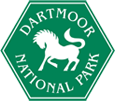The History of the Duchy Hotel
The Old Duchy Hotel (Now the National Park Visitor Centre, Princetown) - A potted history.
The original building was constructed between 1809 and 1810. It was built to serve as quarters for the officers who were stationed here to guard the prisoners of war at the nearby prison and command the associated military barracks which were opened in 1809. The prison was designed by Daniel Asher Alexander and it is likely that he also designed the Duchy Hotel.
The fortunes of the Duchy Hotel appear to mirror the general fortunes of the settlement. In the years surrounding the opening of the prison (1809) the settlement was a busy centre, however, within a few years (1815) hostilities with the French and Americans had ceased, the prisoners of war were released and the prison and barracks were left empty; the small settlement fell into decline.
In 1850 Perry's Directory records the building as being empty. It was in a sad state of decay when Mr James Julian Rowe took it over at about this time, however it soon gained the reputation as 'the foremost hostelry on Dartmoor'; and the Prince Consort reputedly stayed here in 1852. The reason for this change in fortunes and also the royal visit was the reopening of Dartmoor Prison on 2 November 1850, this time as a convict prison.
An early photograph shows the building as rather plainer in design than the present structure. It was built of granite from the prison quarry and had exposed rubblestone walls, with a simple Doric portico in the centre of the front façade which faced on to the turnpike road. The building would have been heated by large open fireplaces fuelled by locally dug peat.
In 1908 the hotel was modernised; it was re-fronted and a large decorated room was added at the rear. This refurbishment was the work of a Plymouth architect, F A Wiblin. Perhaps the reason for it was advanced knowledge of another royal visit, that of the Prince and Princess of Wales on 10 June 1909. Photographs recording this event depict the newly renovated building splendidly bedecked with flowers, palms and hanging baskets.
Many features of the 1908 interior remain; the decorative detail matches the style of the busy baroque dressing added during the contemporary re-fronting of the building, giving the whole a distinctive period flavour. Some of the most notable period features include the entrance hall with its mosaic floor with inscription 'Welcome the Coming – Speed and Parting Guest', the main staircase and the handsome newel posts; the door and door cases with etched glass panels; the plaster ceiling and little bandstand within the coffee room.
Slightly later, in 1914, the Hotel was altered again. An extension was added to the right (north) of the main building; the architects of this addition were the firm of Richardson and Gill, Sir Albert Richardson RIBA. Richardson's extension is in the quieter early 19th century style and reuses the stone pillars from the original front entrance. In 1928 the ground floor rooms were converted to a dining room.
In 1941 and for the following 50 years the building was leased by the Home Office and used as a Prison Officers mess, providing accommodation and a place to eat for prison officers without married quarters. The National Park Authority in partnership with the Duchy of Cornwall took on the responsibility for the complete refurbishment of the building in 1991. The Centre opened to the public on 7 April 1993 and this was followed by the official opening by HRH the Prince of Wales on 9 June 1993. In those days it was known as the High Moorland Visitor Centre. A programme of refurbishment has begun and a change of name to National Park Visitor Centre will see this wonderful old building continue to play an important role in the centre of the moor for many years to come.
